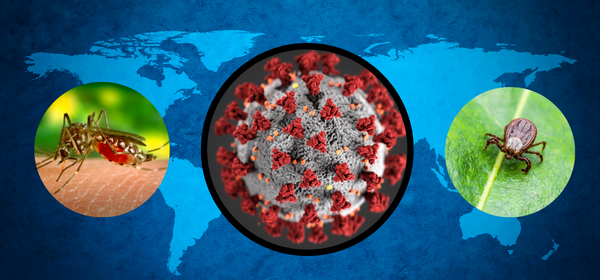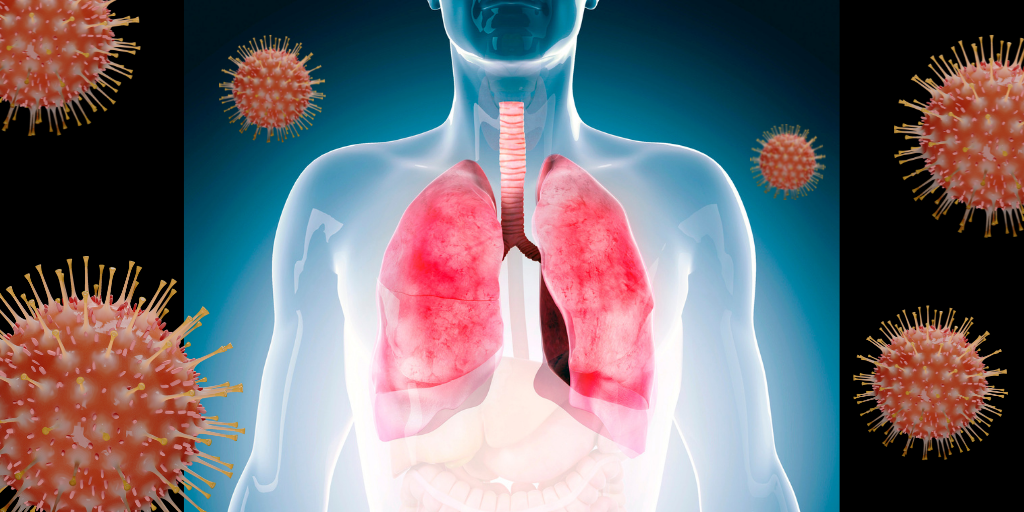KSQA with Nobel Laureate Charlie Rice
The upcoming Keystone Symposia, “Positive-Strand RNA Viruses,” will explore recent advances in our knowledge about SARS-CoV-2, emerging mosquito-borne viruses such as Zika virus, and other viruses that threaten global human health.
Dr. Charles Rice, Professor of Virology at Rockefeller University and 2020 Nobel Prize laureate, was originally scheduled to give the Keynote Address to kick off the conference by sharing how insights from his discovery of Hepatitis C Virus can be applied to understand novel emerging RNA viruses, in terms of tools, generalizable biological principles, and overcoming challenges. Although he is no longer able to attend, he shares his insights with us here in this exclusive KSQA.
Find out more about the Positive-Strand RNA Viruses Conference
Here we catch up with Dr. Rice in an exclusive KSQA about the challenges and breakthroughs in going from the discovery of Hepatitis C to developing clinical treatments, and lessons we can take forward for studying SARS-CoV-2 and other RNA viruses.
Short Preview Video
Watch the full 30 minute interview below
The Journey from Hepatitis C to COVID-19 & Beyond
Dr. Charles M. Rice won the 2020 Nobel Prize in Physiology or Medicine, along with Harvey J. Alter and Michael Houghton, for the discovery of Hepatitis C virus. But he credits the entire community for the accomplishment:
The Nobel Prize is recognition for what the whole field managed to accomplish—hundreds and thousands of people, from the people seeing the patients to the more basic scientists.”
One of the first and greatest hurdles in the journey, was developing a cell-culture system to cultivate and study the virus-- a critical aspect of virology. Cell-culture systems enable scientists to grow the virus in the laboratory, within a dish of animal cells (or plant or bacteria, depending on the viral tropism), providing a controlled system in which single variables can be minutely controlled. They can then examine how changing the system perturbs virus replication, which allows them to learn about what that virus needs to replicate. “It was particularly difficult in the case of Hepatitis C, because we didn’t really have cell-culture systems that were amenable to studying this virus for a long time.”
Without a cell-culture system, it was difficult to learn about how Hepatitis C virus entered cells and manipulated the cellular environment. “This was a terribly difficult virus to study,” says Dr. Rice. “I can remember in the lab it was difficult to get anybody to study Hepatitis C because we didn’t have a virus. I mean, we had a virus but it didn’t grow in cell culture. Students and postdocs who want to do virology want to be able to actually do virology.”
Despite the enormous hurdle, Rice recognized the importance of persevering. At the time, there were an estimated two-hundred million people worldwide that were chronically infected with the virus, which was shown to be associated with liver disease and cancer. Finally, Dr. Rice devised a way to grow the virus in a dish of cells, propelling the field forward. “That was a major breakthrough,” says Dr. Rice. “It was more than fifteen years after the initial discovery of the virus that we had a robust cell culture system to study entry and some of the other functions in the replication cycle.”
Rice wasn't always focused on Hepatitis C virus. He began his career studying the flavivirus family of viruses, of which Hepatitis C is a member, by working on yellow fever. His experience with Yellow Fever served him well when he took on the new challenge of tackling Hepatitis C Virus, in terms of experimental systems and how to address challenges. He cautions others against becoming too tunnel visioned on a single virus, in terms of their own research and the field in general, highlighting that knowledge applied across viral types and families can lead to the most informative insights and breakthroughs. This is an important lesson to take note of as the COVID-19 pandemic proceeds, as there has been an enormous influx of scientists into the coronavirus field.
It’s really important to maintain a diverse portfolio of basic scientists studying these different viruses even if they’re not the cause of the current pandemic, even if they’re not a major disease agent.
We were positioned to move into Hepatitis C because of our work on Yellow Fever, says Rice.
In fact, basic research on other viruses—such as Hepatitis C virus—has enabled COVID-19 research, discoveries and even rapid drug development. While developing the toolkit for studying Hepatitis C took decades, Rice was able to apply these tools and discoveries rapidly in the study of SARS-CoV2 when it emerged. Similarly, drug targets for Hepatitis C that took years to identify, validate and develop drugs against, provide a road map for guiding and accelerating SARS-CoV2 drug development. “The drugs that won the war were these direct-acting anti-viral agents that were either targeting Hepatitis C-encoded enzymes, or proteins that were involved in replication... Similar kinds of drugs will be forthcoming for SARS-CoV-2,” says Rice.
Dr. Rice is excited about the work that’s being currently done with coronaviruses and what we can learn from it. “One of the attractive features—and one of the challenging features—of coronaviruses like SARS-CoV-2 is the huge size of the viral RNA genome, which is two to three times the size of other animal positive-strand RNA viruses. That presents some challenges for studying the virus and developing genetic systems. But it also means that this virus encodes so many different functions, in order to evolve to be able to replicate, and replicate in different species. There really are a potential gold mine of targets to go after, particularly in the replication and transcription complex of the virus.”
Beyond drug targets, Dr. Rice is also interested to see how the COVID-19 vaccines change the field, in terms of how the mRNA vaccine platforms can be repurposed for other viruses, including flaviviruses and influenza. In fact, the potential to develop a universal influenza vaccine could mean that annual flu shots could become unnecessary, or reduced to less frequent administration.
There is a huge amount of activity in industry and academia to exploit the mRNA vaccine technology for influenza vaccines. Maybe we’ll be able to get to a more universal instead of a seasonal vaccine for flu—that would be a huge public health breakthrough.”
The possible applications of the mRNA vaccines even extend beyond viruses. “The technology is also being explored for cancer vaccines and other applications,” says Dr. Rice. “So, I think there’s a lot of continuation of this that is going to affect a lot of different aspects of biomedical research, both in virology and elsewhere.”
Dr. Rice is looking forward to both the coronavirus work and the other virus work that will be presented at the upcoming Keystone conference. “I suspect there will be a large body of work and discussion on coronaviruses... but I’m also looking forward to hearing about some of the other positive-strand viruses. Flaviviruses are still a huge global health problem and fascinating viruses in their own right.”
About the Author
Alison Gilchrist
I graduated with my doctorate in molecular, cellular, and developmental biology from the University of Colorado Boulder in December 2020. During my PhD I studied flaviviruses, which is a group of viruses that includes dengue, Zika, and yellow fever viruses, among others. Then I moved to New York University to study the COVID-19 vaccines and our immune response to new vaccine platforms.
Throughout 2020 and into 2021, working with Keystone kept me involved in the scientific community beyond my thesis work and immediate lab surroundings, which I very much appreciated, since travel and in-person meetings were out of the question!
Every virtual meeting has taught me about new techniques and scientific discoveries, and it has been a treat to see so many possibilities on the future just as I was making decisions for my own scientific career.
Connect with Alison on Twitter @AlisonAbridged or email alison.r.gilchrist@gmail.com
See Alison’s podcasts on @BuffsTalkSci or buffstalkscience.com

Related news
Climate Change & Infectious Disease Threats ePanel ON DEMAND
As climate change alters temperatures, precipitation patterns and other habitat features around the...
Respiratory Virsues: new Frontiers Conference June 29-July 2, 2022
Respiratory viruses are particularly easy to contract compared to other viruses, and cause...






